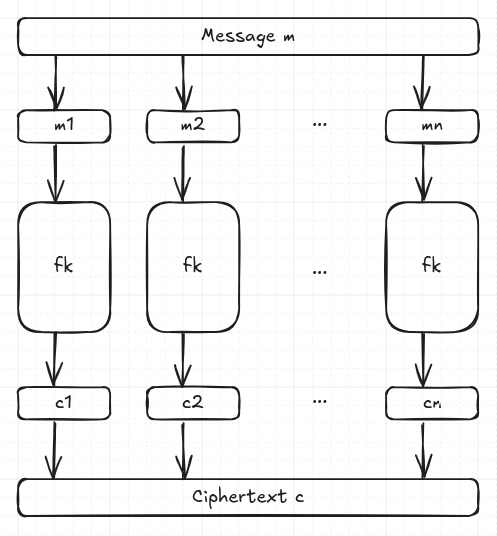Problem

Solution
Let’s start by taking a look at chall.py:
from Crypto.Cipher import AES
import os
key = os.urandom(16)
with open("flag.txt", "r") as f:
flag = f.readline().strip()
cipher = AES.new(key, AES.MODE_ECB)
flag_enc = cipher.encrypt(flag.encode())
print("Here's the encrypted flag in hex: ")
print(flag_enc.hex())
print("Alright, lemme spin up my Extremely Convenient Breaker (trademark copyright all rights reserved). ")
while True:
ecb = input("What ciphertext do you want me to break in an extremely convenient manner? Enter as hex: ")
try:
ecb = bytes.fromhex(ecb)
if not len(ecb) == 64:
print("Sorry, it's not *that* convenient. Make your ciphertext 64 bytes please. ")
elif ecb == flag_enc:
print("No, I'm not decrypting the flag. ")
else:
print(cipher.decrypt(ecb))
except Exception:
print("Uh something went wrong, please try again. ")What do we learn from this?
- The flag is encrypted with AES in ECB mode
- The key is 16 bytes
- The ciphertext is 64 bytes
Running the oracle, we see the following (minus the redacted section):

Passing in the encrypted flag (in its entirety) is out of the question:

However, the flag can be decrypted in parts, given this is ECB-mode AES.
Background
Electronic CodeBook (ECB) mode AES encrypts messages in blocks using a function keyed on key (herein notated as ). Each ciphertext block is thus computed like: . After all blocks have been encrypted, all ‘s are concatenated to construct the resulting ciphertext .

Back to the show
So now that we know how ECB mode works, we know that we can simply decrypt each block the join the resulting plaintext. Let’s do that!
Block 1
To retrieve the first block, I altered the last value (i.e. f → e) then decrypted the resulting string. This, of course, corrupts the final block, but since ECB encrypts each block independently, the first block is preserved.

Block 2
The same goes for the second block, but the other way around.
